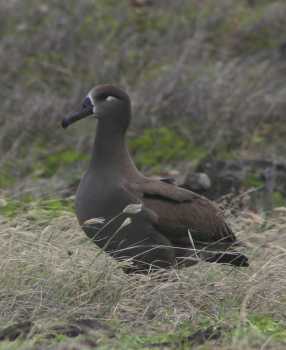Canada is one of the relatively few countries that has produced a National Plan of Action for Reducing the Incidental Catch of Seabirds in Longline Fisheries (NPOA-Seabirds) since the Food and Agriculture Organization of the United Nations (FAO) produced its International Plan (IPOA-Seabirds) that sets outs out a framework for such national plans in 1999.
The Canadian NPOA-Seabirds was adopted in 2007, following the production of a technical report four years earlier in 2003 and an assessment of seabird bycatch in Canadian longline and net fisheries in the Pacific off British Columbia in 2005. Canada has now published a progress report on the implementation of its NPOA-Seabirds.
The report considers that the incidence of seabird bycatch in Canadian waters (both Atlantic and Pacific) continues to be low, as tabulated in an Annex to the report and based on 10% audits of on-board video monitoring and on vessel logbooks (rather than on observer reports and returned carcasses). "Predicted annual mortality" of albatrosses (mainly ACAP-listed and Vulnerable Black-footed Albatrosses Phoebastria nigripes) killed in the four-year period 2006-2009 in the Pacific on demersal longlines taking "groundfish" (made up of several species-directed fisheries) is set at 85 (range 25-128), with an estimated total for all birds of 421/year (range 156-795). The balance is mainly made up of gulls and unidentified birds. This contrasts with estimated totals of over 8000 and perhaps as many as 14 000 Common Guillemots or Murres Uria aalge drowned annually in Atlantic gill nets set for Atlantic Cod Gadus morhua over the period 2001-2008. North Atlantic longlines were estimated to kill a few hundred non-threatened Great Shearwaters Puffinus gravis each year.

Black-footed Albatross. Photograph by Lindsay Young
Mention is made of Canadian international efforts in relation to the Albatross and Petrel Agreement and three of the five tuna Regional Fisheries Management Organizations (tRFMOs) and also with Chile over conservation of the Vulnerable Pink-footed Shearwater P. creatopus. This shearwater is likely to be nominated for listing within the Agreement over the next few years.
The report concludes that reduction of seabird bycatch will remain an ongoing process with expectation of further reductions in numbers of seabirds killed by Canadian marine capture fisheries in the future.
Selected References:
FAO 1999. International Plan of Action for Reducing Incidental Catch of Seabirds in Longline Fisheries. International Plan of Action for the Conservation and Management of Sharks. International Plan of Action for the Management of Fishing Capacity. Rome: Food and Agriculture Organization of the United Nations. 26 pp.
FAO 2009. Fishing operations 2. Best practices to reduce incidental catch of seabirds in capture fisheries. FAO Technical Guidelines for Responsible Fisheries No. 1, Suppl. 2. 49 pp. Fisheries and Oceans Canada 2007. National Plan of Action for Reducing the Incidental Catch of Seabirds in Longline Fisheries. Ottawa: Fisheries and Oceans Canada. 29 pp. [also available in French].
Fisheries and Oceans Canada 2012. Canada's Progress Report on the Implementation of Key Actions Pursuant to the National Plan of Action for Reducing the Incidental Catch of Seabirds in Longline Fisheries (March 2007). Ottawa: Fisheries and Oceans Canada. 19 pp. [also available in French].
Kenyon, J.K., Morgan, K.H., Bentley, M.D., McFarlane Tranquila, L.A. & Moore, K.E. 2009. Atlas of pelagic seabirds of the west coast of Canada and adjacent areas. Canadian Wildlife Service Technical Report Series No. 499. 308 pp.
Smith, J.L. & Morgan, K.H. 2005. An assessment of seabird bycatch in longline and net fisheries in British Columbia. Canadian Wildlife Technical Report Series No. 401. 51 pp.
John Cooper, ACAP Information Officer, 2 August 2012

 English
English  Français
Français  Español
Español